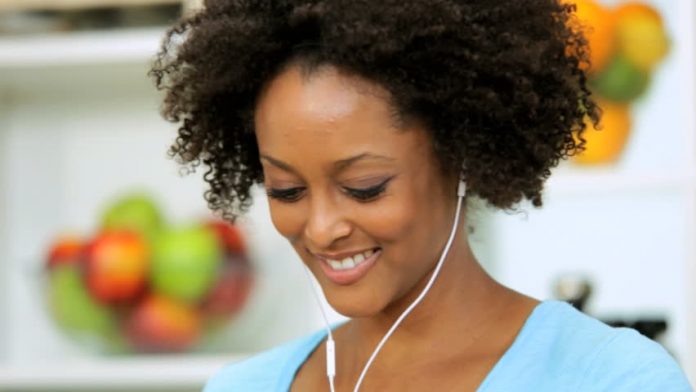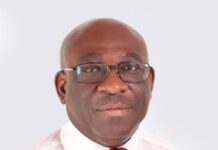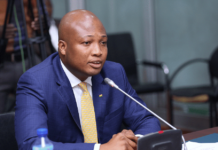
Wherever, whenever on the sidewalk, public transport, workplaces, market, malls and even when crossing the road, is the order of the day in the 21st century era. It is a pair of small loudspeaker that consist of individual units that is plug into a user’s ear canal, that are electroacoustic transducers which convert an electrical signal to a corresponding sound making it possible to listen to music or hear someone when communicating, and is known as, “earpiece or earbud”.
In the context of telecommunication, an earpiece is a combination of earbud and microphone. Earpiece connect to a signal source such as an audio amplifier, radio, CD player, portable media player, mobile phone, video game console, or electronic musical instrument; either directly using a cord, or using wireless technology such as Bluetooth, DECT(Digital Enhanced Cordless Telecommunication) or FM radio.
But, just remember, the usage of everything that has an advantage, has it’s own disadvantages. Statistically, 1.1 billion teenagers and young adults are at risk of hearing impairment due to the unsafe use of personal audio devices, including smartphones aside the exposure of sound at noisy entertainment venues such as nightclubs, bars and sporting events, according to WHO(World Health Organization) report in 2015. Hearing loss has potentially devastating consequences for physical and mental health, education and employment. Data from studies in middle and high income countries analysed by WHO indicate that among teenagers and young adults aged 12-35 years, nearly 50% are exposed to unsafe levels of sound from the use of personal audio devices compared to 40% that are exposed to potentially damaging levels of sound at entertainment venues which is less. Unsafe levels of sounds can be, for example, exposure to in excess of 85 decibels (dB) for 8 hours or 100dB for 15 minutes. Decibels are the unit used to measure the intensity of sound or the power level of an electrical signal by comparing it with a given level on logarithmic scale.
Aside the earpiece, headphones are also common used by people in various professional contexts, such as audio engineers mixing sound for live concerts or sound recordings and DJ’s who use headphones to cue in the next song without the audience hearing. Aircraft pilots and call center employees also use headphones but with an integrated microphone.
With the electromagnetic waves produce by the earpiece, is unsafe for the brain. As sound through the auditory nerve to the auditory brain may cause brain damage and in case your earpiece is a public property, bare in mind that it leads to ear infection. The earpiece built to insert in the ear canal, blocks the air passage which could result in higher ear infection risk and ear numbness that can lead to deafness. And of course, entertainment venues which include bars, pubs and restaurants also produces recreational noise and public information campaigns from unauthorized vans selling herbal medicines. As other religions cannot be left out thus, from the preacher on the street with the megaphone or the PA(Public Address) system to the horn on top of the mosque. All this can cause hearing impairment to people due to the loudness of sound.
Meanwhile, Director for the Department for Management of Noncommunicable Diseases, Disability, Violence and Injury Prevention of WHO, Dr. Etienne Krug said “As they go about their daily lives doing what they enjoy more and more, young people are placing themselves at risk of hearing loss.They should be aware that once you lose your hearing, it won’t come back. Taking simple preventive actions will allow people to continue to enjoy themselves without putting their hearing at risk.”
Safe listening depends on the intensity or loudness of sound, and the duration and frequency of listening. Despite warning signals about the intensity of the volume of sound indicated by some gadgets, for instance, the mobile phone, some users as usual still use the earpiece plug in the ear with the intensity of sound. But then, just be cautioned that exposure to loudness of sounds can result in temporal hearing loss or Tinnitus which is a ringing sensation in the ear. When the exposure is particularly loud, regular or prolonged, it can lead to permanent damage of the ear’s sensory cells, resulting in irreversible hearing loss.
However, WHO recommends that Teenagers and young people can better protect their hearing by keeping the volume down on personal audio devices and restricting the daily use of personal audio devices to less than an hour. Also, wearing earplugs when visiting noisy venues and, if possible, noise-cancelling earpiece is the best to use.
Furthermore, time spent engaged in noisy activities should be limited by taking short listening breaks and with the help of smartphone apps, safe listening levels can be monitored. Warning signs of hearing loss and regular hearing check-ups should also be taken into consideration.
The Ministry of Health, Government and other abled institutions have a role to play by educating the public and enforcing strict legislation on recreational noise, by raising awareness of the risks of hearing loss through public information campaigns. Parents, teachers and physicians can educate young people about safe listening, while managers of entertainment venues can respect the safe noise levels to operate. There is also the need for manufacturers to design personal audio devices with safety features and display information about safe listening on products and packaging.
During this year’s International Ear Care Day to “Make Listening Safe” an initiative was implemented to draw attention to the dangers of unsafe listening and promote safer practices. In collaboration with partners worldwide, WHO deem it necessary to alert young people and their families about the risks of noise-induced hearing loss and advocate towards Governments for greater attention to this issue as part of their broader efforts to prevent hearing loss generally.
Prince Schroeder


























